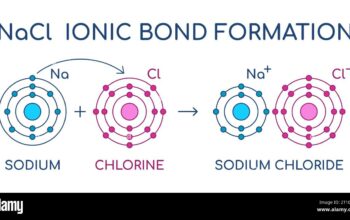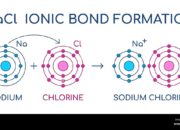The atomic mass of hydrogen is often cited as 1. This seemingly simple assertion, however, poses a thought-provoking inquiry: why is the atomic mass of hydrogen not 2? At first glance, the digits might appear as mere figures, but they encapsulate a profound narrative about atomic structure, subatomic particles, and the nuances of mass measurement. To unravel this conundrum, one must delve into the intricacies of particle physics, isotopes, and the definitive properties that underpin the concept of atomic mass itself.
At the heart of the matter lies the definition of atomic mass. Atomic mass is a weighted average that reflects the abundance and mass of an element’s isotopes relative to the standard of carbon-12. Naturally, hydrogen, the first element on the periodic table, has several isotopes, the most notable being protium (¹H), deuterium (²H), and tritium (³H). Each of these isotopes holds varying numbers of neutrons, which contribute not only to atomic stability but also to their respective atomic masses. Protium, the most prevalent isotope of hydrogen, consists solely of one proton and zero neutrons, hence its atomic mass of approximately 1 amu (atomic mass unit).
One may find it intriguing to consider why one might reflexively associate hydrogen with an atomic mass of 2. This number predominantly represents deuterium, which contains one proton and one neutron. However, the atomic mass listed on the periodic table is an average, where the weight from isotopes is factored based on their natural abundance. Protium overwhelmingly dominates hydrogen’s natural occurrence, constituting about 99.98% of all hydrogen atoms found in nature. Consequently, it is the presence of this neutronless isotope that significantly skews the average atomic mass towards 1.
Moreover, the conventions of scientific measurement play a crucial role in the perceived atomic mass of hydrogen. Atomic masses are often approximated to a whole number for simplicity and standardization. Scientists routinely utilize weighted averages, which can occasionally obscure the nuances inherent in individual isotopic variations. Hence, even though deuterium and tritium possess greater atomic masses, the sheer preponderance of protium inexorably aligns hydrogen’s reported atomic mass closer to 1 rather than 2.
This leads to a more intriguing query surrounding the origins of atomic mass itself. Mass is fundamentally defined by the number of subatomic particles—specifically protons and neutrons—yet its actual measurement is a product of the intricate interplay between energy, mass, and the principles established by Einstein’s mass-energy equivalence principle. When discussing hydrogen, specifically the protium isotope, we find that the energy associated with the binding of its subatomic particles showcases a deeper complexity. The mass of a proton is approximately 1.007 amu, leaving it very close to 1 when neglected of an additional neutron, which serves to confound our perception of hydrogen’s mass foundation.
Considering why the atomic mass of hydrogen seems to resonate with the value of 1, it is prudent to juxtapose this with an understanding of its chemical identity and interactions in various environments. Hydrogen, with its singular electron, readily engages in covalent bonding with a variety of elements, transforming its atomic performance as it traverses the periodic landscape. In light of this behavior, one might ponder how altering the atomic composition—from the fusion processes occurring in the cores of stars to earthly chemical reactions—would affect the measurable atomic mass of hydrogen and its isotopes.
In exploration, one could also contemplate the implications of hydrogen isotopes in real-world applications, such as nuclear fusion technology, which promises sustainable energy solutions. The transition between isotopes, especially in the context of fusion reactions, emphasizes the relative stability and mass-binding energy that isotopes contribute to energetics and interaction dynamics. It beckons one to inquire: how might our understanding of atomic mass inform our approach to these transformative technologies?
The dissection of hydrogen’s atomic mass extends beyond mere numerical representation. It invites an examination of the principles of atomic structure and the mechanisms by which we, as researchers or inquisitors, glean knowledge from the natural world. The characterizations of protons, neutrons, and electrons each play an invaluable role in a broader comprehension of elements, their isotopes, and the atomic realm at large. Additionally, one must appreciate that elements may have nuanced attributes that elude simplistic categorization into mass averages.
Ultimately, hydrogen’s atomic mass is a multifaceted concept underlying both fundamental physics and the practical applications shaping society’s technological advancements. Through rigorously analyzing the intrinsic properties of hydrogen isotopes, one acquires a greater appreciation for the beauty of atomic interactions and the underlying forces guiding our universe. It presents an entertaining yet illuminating challenge to reconsider our assumptions about atomic mass—much like poking into the depths of scientific inquiry in pursuit of newfound clarity within the intricate fabric of matter.












